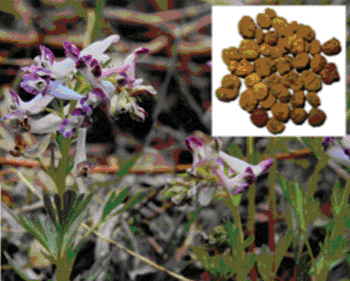Root Extract from Traditional Chinese Medicinal Plant Shows Promise as Pain Reliever
By LabMedica International staff writers
Posted on 13 Jan 2014
A compound isolated from the roots of the traditional Chinese medicinal plant Corydalis yanhusuo has been found to be effective at relieving acute, inflammatory, and neuropathic pains.Posted on 13 Jan 2014
Investigators at the University of California, Irvine (USA) and their collaborators at the Dalian Institute of Chemical Physics (China) isolated dehydrocorybulbine (DHCB) from the roots of C. yanhusuo, a flowering herbal plant that grows in Siberia, Northern China, and Japan. Extracts prepared from the roots of this plant have been used for many hundreds of years to alleviate menstrual cramps, chest pain, and abdominal pain.

Image: Corydalis yanhusuo plants and isolated rhizomes (inset) (Photo courtesy of Duoclieu, Vietnam).
The investigators tested DHCB in a rodent model. They reported in the January 2, 2014, online edition of the journal Current Biology that it displayed moderate dopamine receptor-antagonist activities. It was effective against inflammatory pain as well as injury-induced neuropathic pain and did not generate the sort of tolerance that develops with continued use of most conventional pain relievers, such as morphine.
Despite the promising results so far obtained, toxicity levels of purified DHCB remain to be established. While purified DHCB is not currently available, it is a component of the C. yanhusuo root or extracts that can be purchased in health stores or online.
“Today the pharmaceutical industry struggles to find new drugs. Yet for centuries people have used herbal remedies to address myriad health conditions, including pain. Our objective was to identify compounds in these herbal remedies that may help us discover new ways to treat health problems,” said senior author Dr. Olivier Civelli, professor of neuropharmacology at the University of California, Irvine. “We are excited that this one shows promise as an effective pharmaceutical. It also shows a different way to understand the pain mechanism.”
Related Links:
University of California, Irvine
Dalian Institute of Chemical Physics













